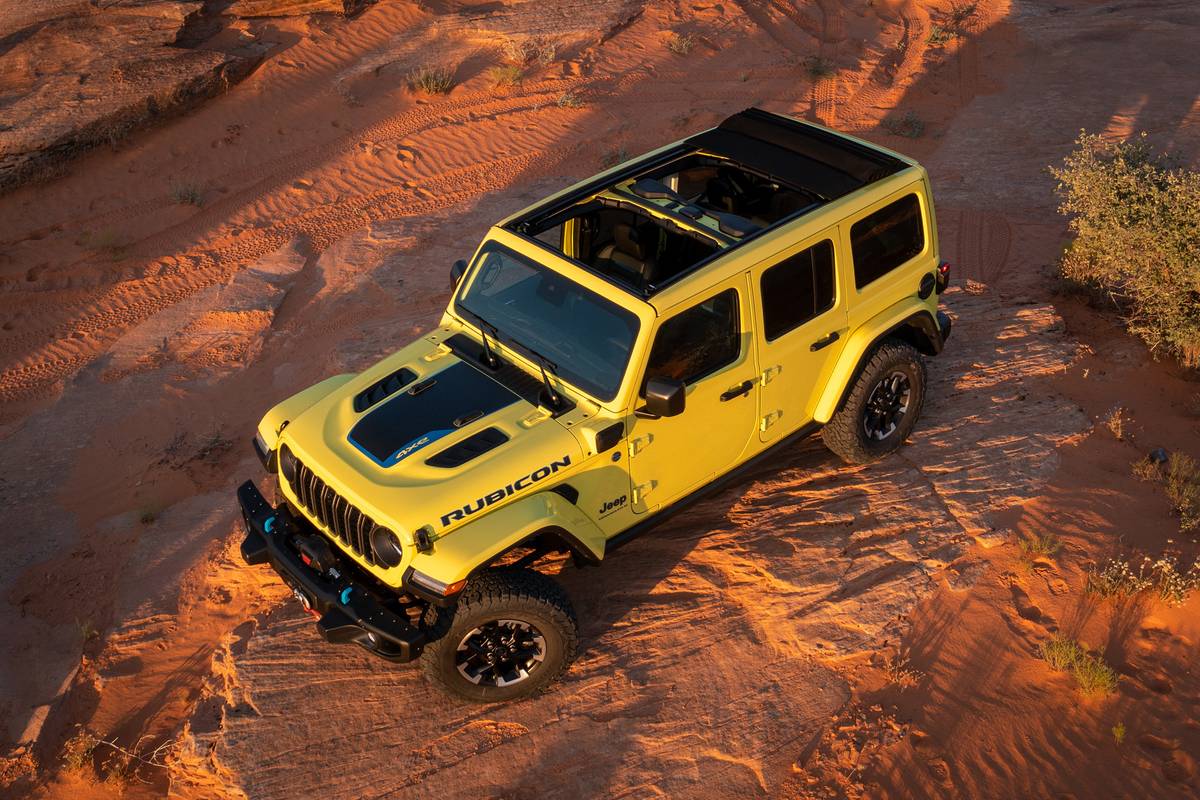IndyStar.com's view
The Ford Motor Co. had one of its better ideas when it introduced the Ford Explorer sport- utility vehicle in 1990.
Not afraid to tinker with a good thing, the company then introduced for the 1995 model run a redesigned Explorer with a host of new features.
The 1995 Explorer possesses styling updates, dual air bags, a new suspension system and a new four-wheel-drive system. Combined, all these features make the vehicle a better model than its predecessors.
The major strides forward lie, as usual, out of sight. They consist of a different suspension, improved braking and steering, and a four-wheel drive that is the essence of simplicity to activate.
Even the styling has been upgraded, with a redesigned, aerodynamically sloping hood complementing new fenders, headlights, bumper and grille. The styling touches give the sport-utility vehicle a lighter, less-boxy look than its predecessor.
A truck may be a truck, but the Ford Explorer XLT four-door sport-utility vehicle that Ford Motor Co.’s Bill Carroll provided for a test didn’t drive like one. It had more characteristics like a passenger car.
There are some facets of compromise between a car and a sport-utility vehicle relative to ride, cargo capacity, and four-wheel-drive utilization. But overall, first-time Explorer drivers will feel just at home as if they were sitting behind the wheel of a Ford automobile.
One of the better convenience features on the test vehicle was its running boards. They made entrance and exit a step-in and step-out process rather than a leap in and leap out.
Driving the Explorer with its four-speed automatic was virtually no different than driving a car, except that you had a greater field of vision. It was just a matter of putting it in drive and sallying forth.
A full-gauge instrument panel is directly in front of the driver. An optional overhead console provides digital temperature readouts.
Ford’s suspension engineers have developed a new SLA (short/long arm) front suspension system and rack-and-pinion steering for an improved ride and vehicle control.
The suspension, by virtue of being developed for four- wheel-drive off-road use, gave a stiffer ride than that found in Ford’s four- door passenger cars. There was a slight rock to the ride, similar to the company’s high-performance sports cars.
The ability of the vehicle to function off road accounts for the ride characteristics, thanks to an improved four-wheel-drive system called Control Trac.
A lot of Explorer owners are never going to leave the pavement with their vehicle. But Control Trac enhances safety and stability by automatically increasing front-wheel- drive torque when rear-wheel slippage occurs.
In winter conditions, or even in heavy rain or on oil-saturated pavement, the four-wheel-drive system comes into its own.
If unstable conditions are encountered, it’s just a matter of turning a switch on the instrument panel from 2WD to 4WD, and going on. Nothing could be simpler.
Th e Explorer moves in satisfactory if not spectacular fashion, courtesy of a 4.0-liter V6 engine. The power output is 160 horsepower, a number that enables the vehicle to perform its duties without faltering.
Some quarters, including this one, are calling for a V8. Ford has heard the message. A V8 is scheduled for the 1996 model, either at the introduction of the ’96 sport-utility vehicle or during the model run.
If you’re not a performance buff, you’re going to feel everything is just fine as is. The V6 is smooth. It pulls well. And with ABS disc brakes on all four corners, there was no trouble stopping the vehicle.
If there was a downside, it would be acceleration.
The V6 seemed a little slow on acceleration, and sometimes it’s necessary to plan ahead on making a pass. But the flip side is that it’s something that really doesn’t seem to worry a lot of sport-utility owners.
TheExplorer four-door stable consists of the XL, XLT, Eddie Bauer and Limited editions, with all models offering a specific use for a specific type of driver.
We used the Explorer as an everyday go-to-work vehicle, and it acted as if it was going to run forever.
The only glitch was a rather humorous one. The remote door lock/unlock unit quit working. The reason — a dead battery.
1995 Ford Explorer Base price: $25,000As tested: $28,255Type: Front-engine, rear- drive, five-passenger, four-door sport-utility vehicleEngine: 4.0 liters, OHV V6, 12 valves, fuel-injected, 160 horsepower, 225 foot-pounds of torqueTransmission: Four-speed automaticAcceleration: 0-60 mph in 10.4 secondsMileage: 15 mpg city/20 mpg highwayWheelbase: 111.5 inchesLength: 188.5 inchesWidth: 70.2 inchesCurb weight: 4,189 poundsCargo capacity: 81.6 cubic feetOptions: Preferred equipment package (including premium stereo, luggage rack, luxury group, electronics group, overhead console, floor mats, color-keyed carpet, cargo area cover), trailer-towing package, running boards.
Latest news



